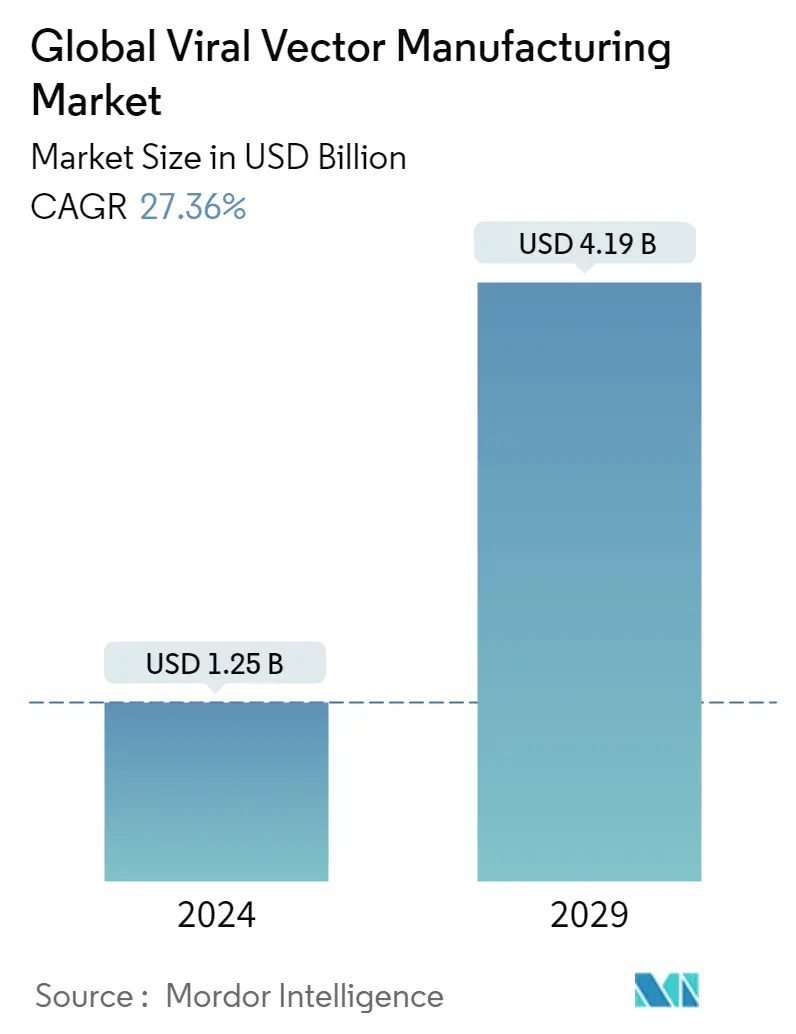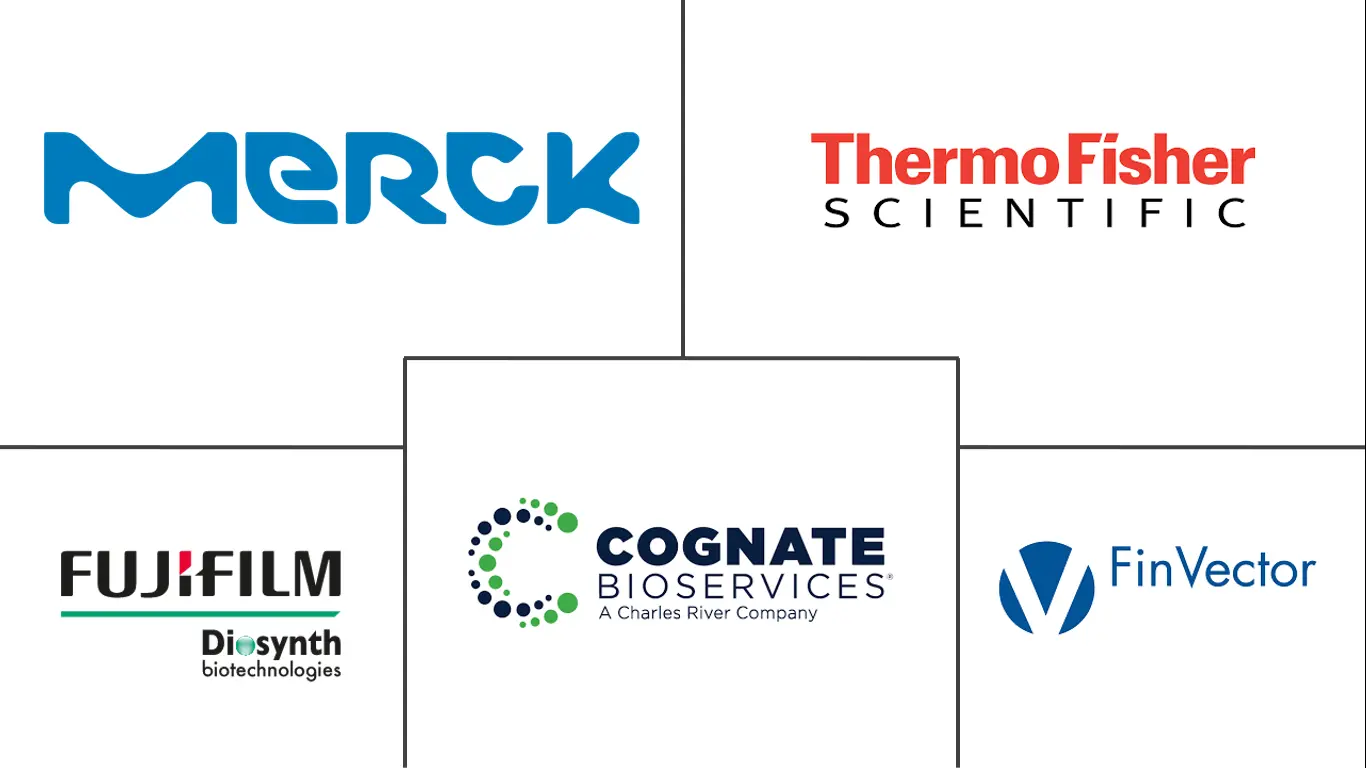Market Size of Global Viral Vector Manufacturing Industry

| Study Period | 2021 - 2029 |
| Market Size (2024) | USD 1.25 Billion |
| Market Size (2029) | USD 4.19 Billion |
| CAGR (2024 - 2029) | 27.36 % |
| Fastest Growing Market | Asia-Pacific |
| Largest Market | North America |
Major Players
*Disclaimer: Major Players sorted in no particular order |
Need a report that reflects how COVID-19 has impacted this market and its growth?
Viral Vector Manufacturing Market Analysis
The Global Viral Vector Manufacturing Market size is estimated at USD 1.25 billion in 2024, and is expected to reach USD 4.19 billion by 2029, growing at a CAGR of 27.36% during the forecast period (2024-2029).
The COVID-19 pandemic had underlined the importance of vaccine development for the global population, and it has had a positive impact on the growth of the viral vector manufacturing market. According to the WHO Global COVID-19 Vaccination - Strategic Vision for 2022, there are at least 17 vaccines in use. As of November 8, 2022, 12.88 billion doses were administered, and another 400 and more vaccine candidates were in clinical and preclinical development. Two viral vector vaccines have been authorized for emergency use in many countries for COVID-19, as of January 7, 2022, according to the Viral Vector Vaccines segment published by the Infectious Diseases Society of America. Moreover, various companies are launching their products and are involved in various partnerships, collaborations, and other developments which are expected to positively impact the market. For instance, in April 2020, AstraZeneca and Oxford University announced their partnership to develop a viral vectored vaccine utilizing a modified replication-deficient chimp adenovirus vector, ChAdOx1. Also, Janssen Biotech (Johnson & Johnson) has developed a viral vector vaccine utilizing a replication-incompetent human adenovirus vector and received approval from US FDA in February 2021, importance of viral vector manufacturing is increasing owing to the increasing research and developments occurring in current times.
The market is driven by the increasing prevalence of genetic disorders, cancer, and infectious diseases, the increasing number of clinical studies and availability of funding for gene therapy development, and potential applications in novel drug delivery approaches. For instance, as per the report published by the Foundation for Food & Agriculture Research in April 2022, African Swine Fever (ASF) has emerged as one of the highly contagious viruses that cause 100% mortality in swine. As of now, there is no commercially available vaccine to treat the disease. Therefore, to combat the disease, the Foundation for Food & Agricultural Research granted USD 145,000 to Genvax Technologies for developing a self-amplifying messenger RNA (saRNA) vaccine for African Swine Fever in association with the United States Department of Agriculture-Agricultural Research Services-Plum Island Animal Disease Center (USDA-ARS-PIADC). This prevalence of numerous infectious and viral diseases is motivating major companies to focus on viral vector product development and manufacturing.
Additionally, as the recombinant viral vectors are highly effective carriers of sequences encoding virus-disabling sequences, the appropriate and exact viral vectors usually need to be selected and adapted for application in the treatment of specific viral infections. Currently, there have been significant public and private sector initiatives are being taken for the development of viral vector vaccines, leading the key players to invest in capacity expansion for manufacturing activities. For example, in Augut 2022, Thermo Fisher opened a new manufacturing facility for viral vector production in Plainville, Massachusetts. The 300,000 square-foot-plant is opened with an aim to manufacture viral vectors, which are critical components in the development of gene therapies. Therefore, these related development activities by major players are also expected to boost the market's growth.
Government initiatives such as direct funding towards viral vector manufacture, which is increasing awareness, while the regulatory environment is getting streamlined via changes, such as prompt approval processes, are driving the studied market's growth. These aforementioned factors can propel the market for viral vector manufacturing and are expected to grow in the future. However, the high cost of gene therapies and challenges in viral vector manufacturing capacity can impact market growth negatively.
